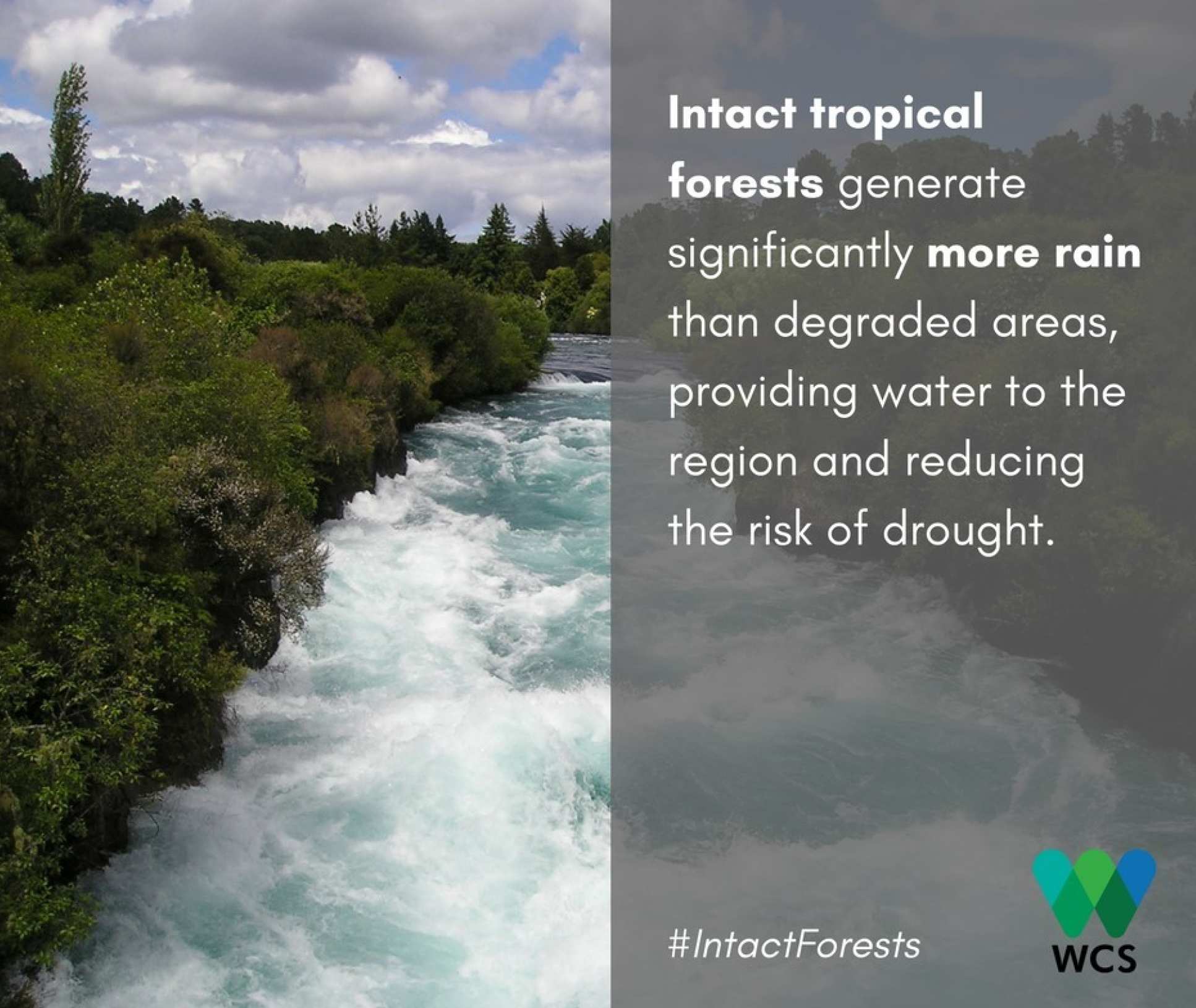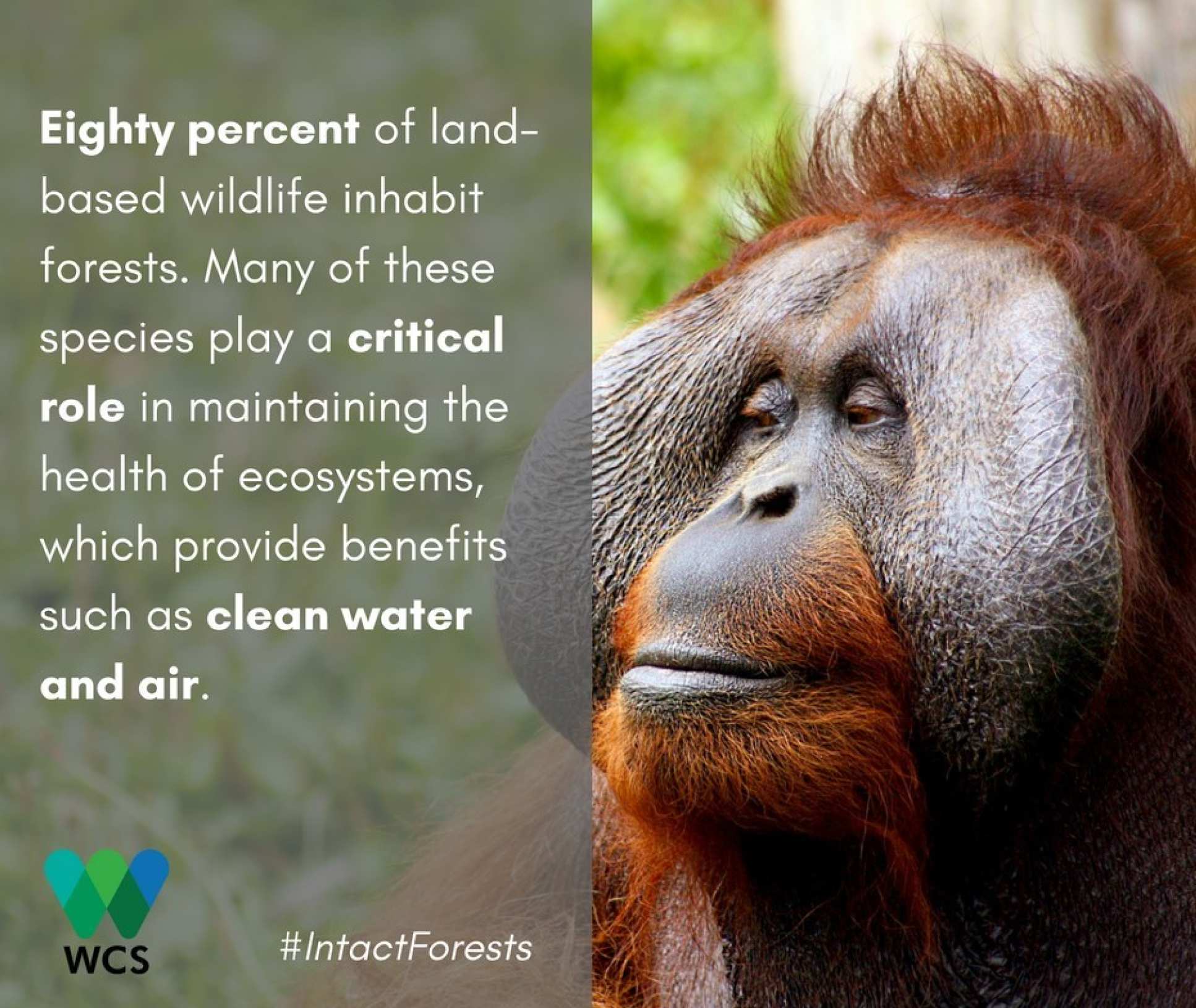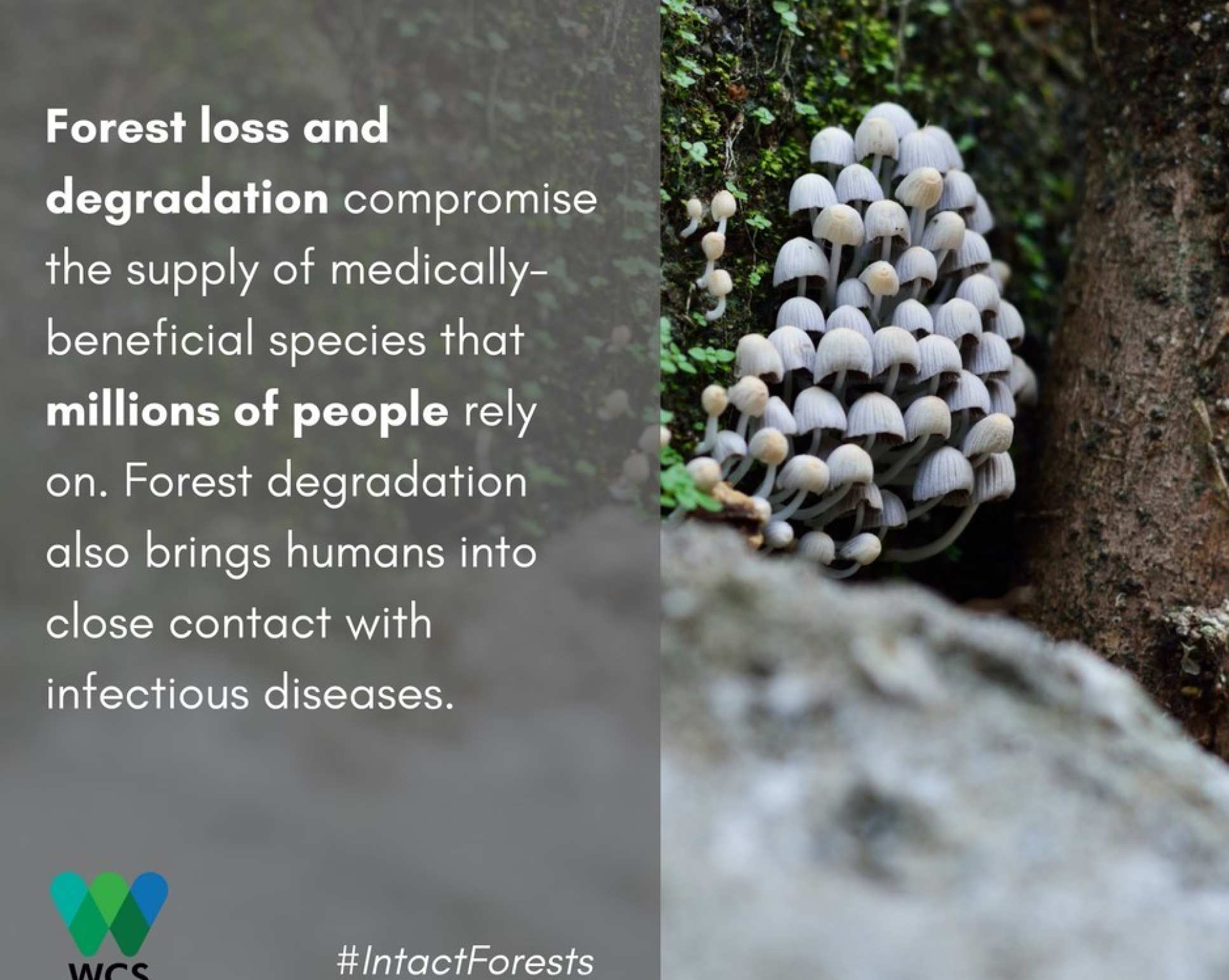

The world’s most valuable forests need special protections to ensure we meet conservation and climate goals, scientists recommend in a new study.
New research published this week in Nature Ecology & Evolution demonstrates the extraordinary value of Earth's remaining intact forests - which make up less than one in five of all forests - for addressing climate change and protecting wildlife, critical watersheds, indigenous cultures, and human health.
In addition to compromising livelihoods and being a vast source of compounds of medical importance, the removal and degradation of intact forests have been repeatedly linked to changing disease risks in humans. Dr Kris Murray
With over 80 percent of forests already degraded by human and industrial activities such as logging, draining and overhunting, the study, led by the Wildlife Conservation Society (WCS) and including researchers from Imperial College London, underscores the immediate need for international policies to secure the remaining intact forests.
These policies could include establishing new protected areas, securing the land rights of indigenous peoples, regulating industry and hunting, and targeting restoration efforts and public finance.
Without specific strategies like these, the authors say that current global targets addressing climate change, poverty and biodiversity may fall short, including the United Nations' Sustainable Development Goals to sustainably manage forests, combat desertification, halt and reverse land degradation, and halt biodiversity loss.
The crown jewels of forests
Forest landscapes range from highly intact ones to those which are heavily logged, fragmented, burnt, drained and/or over-hunted. Policymakers and scientists rarely take account of the relative values of these different types, due in part to the lack of a uniform way of measuring their quality.
Professor James Watson of WCS and the University of Queensland said: "As vital carbon sinks and habitats for millions of people and imperilled wildlife, it is well known that forest protection is essential for any environmental solution - yet not all forests are equal.
"Forest conservation must be prioritized based on their relative values - and Earth's remaining intact forests are the crown jewels, ones that global climate and biodiversity policies must now emphasize."

According to the study, the encroachment of human and industrial activity can have catastrophic effects. Once opened up, formerly intact forests become increasingly susceptible to natural pressures such as disease, fires, and erosion. Because of this, they become less resilient to man-made climate change, and they become more accessible to human use, driving a spiral of decline.
The benefits of keeping forests together
Some key benefits of intact forests include:
- Climate change: Intact forests currently absorb around 25 percent of carbon emissions from all human sources - damaging them will leave far more carbon dioxide in the air to warm the climate.
- Water availability: Intact tropical forests ensure the stability of local and regional weather, generating more rain than cleared forests and thereby reducing the risk of drought.
- Biodiversity: Intact forests have higher numbers offorest-dependentt species and have higher functional and genetic diversity.
- Indigenous culture: Intact forests enable many indigenous groups to sustain their traditional cultures and livelihoods. In turn, these peoples are often staunch defenders of their ancestral lands.
- Human health: Forest degradation and loss compromise the supply of medically beneficial species that millions of people rely on; additionally, forest degradation drives the spread of many infectious diseases by bringing humans and disease vectors into close contact.

A huge gamble
Co-author Dr Kris Murray, from the Grantham Institute and the Department of Infectious Disease Epidemiology at Imperial, said: "In addition to compromising livelihoods and being a vast source of compounds of medical importance, the removal and degradation of intact forests have been repeatedly linked to changing disease risks in humans.
"The mechanisms are complex and variable, but a fairly consistent outcome of land-use change, particularly deforestation, is that people come into increasing or new contact with disease hosts or vectors. The natural dynamics of diseases circulating in wildlife can also be disrupted, which can result in new diseases spilling over into the human population or existing diseases increasing in prevalence or impact."

Dr Tom Evans, WCS Director of Forest Conservation and Climate, said: "Even if all global targets to halt deforestation were met, humanity might be left with only degraded, damaged forests, in need of costly and sometimes unfeasible restoration, open to a cascade of further threats and perhaps lacking the resilience needed to weather the stresses of climate change.
"This is a huge gamble to take, for conservation, for climate change, and for some of the most vulnerable human communities on the planet. Our research shows that a remedy is indeed possible, but we need to act whilst there are still intact forests to save."
How to save the forests
The team say retaining the integrity of intact forests must be a central component of global and national environmental strategies, alongside current efforts to stabilize deforestation frontiers and stimulate restoration. The researchers recommend several policy interventions to fill this gap, including:
- Creating new standard metrics of intactness that can be used to raise awareness of the importance of forest quality and to help target action towards the most intact places.
- Embedding the intact forests concept in the UN Framework Convention on Climate and the Intergovernmental Panel on Climate Change's Special Reports, to help ensure the Paris Agreement's climate commitments include intact forest protections.
- Supporting global and local forest policies that limit road expansion; regulate hunting, extraction, and development; invest in restoration and protected areas; and help secure indigenous communities' land tenure rights.
- Supporting efforts that both restore and make degraded forests more productive while also conserving at-risk intact systems, rather than opening intact forests to activity.
-
This research was supported by the John D. and Catherine T. MacArthur Foundation.
'The exceptional value of intact forest ecosystems' by James E. M. Watson et al. is published in Nature Ecology & Evolution.
Article text (excluding photos or graphics) available under an Attribution-NonCommercial-ShareAlike Creative Commons license.
Photos and graphics subject to third party copyright used with permission or © Imperial College London.
Reporter
Hayley Dunning
Communications Division

Contact details
Email: press.office@imperial.ac.uk
Show all stories by this author




Leave a comment
Your comment may be published, displaying your name as you provide it, unless you request otherwise. Your contact details will never be published.